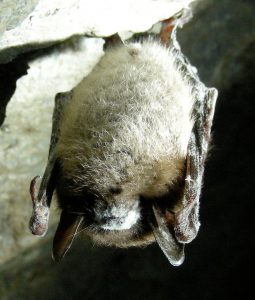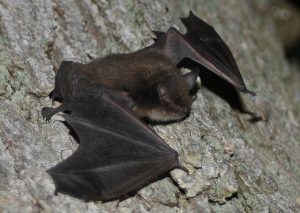White-nose Syndrome (WNS) continues to advance across the country, killing at least a million bats each year. It was first detected in New York in February 2006 and reached the Straits Area during the winter of 2013-14. By the winter of 2014-15 it was found throughout the Upper Peninsula. As of this year, WNS has killed bats in 29 states and 5 Canadian Provinces.


Here at the Straits we have witnessed a dramatic decrease in the population of the Little Brown Bat (Myotis lucifugus), which probably hibernate in some of the infected caves located in the eastern Upper Peninsula.
In years past, Little Brown Bats were a common evening sight on Mackinac Isla

If the Little Brown Bat does disappear from our forests we will certainly miss these valuable insectivores, because of the large number of mosquitoes and midges that they eat every night. They often consume half of their body weight per night, which translates to hundreds of flying insects per hour.
Although healthy bats can live to be over 10 years old, the female can only have one pup per year, so the population will not recover anytime soon. Hopefully some of the local bats have survived the winter and we’ll see a few again this summer. The forest just wouldn’t be the same without them.








